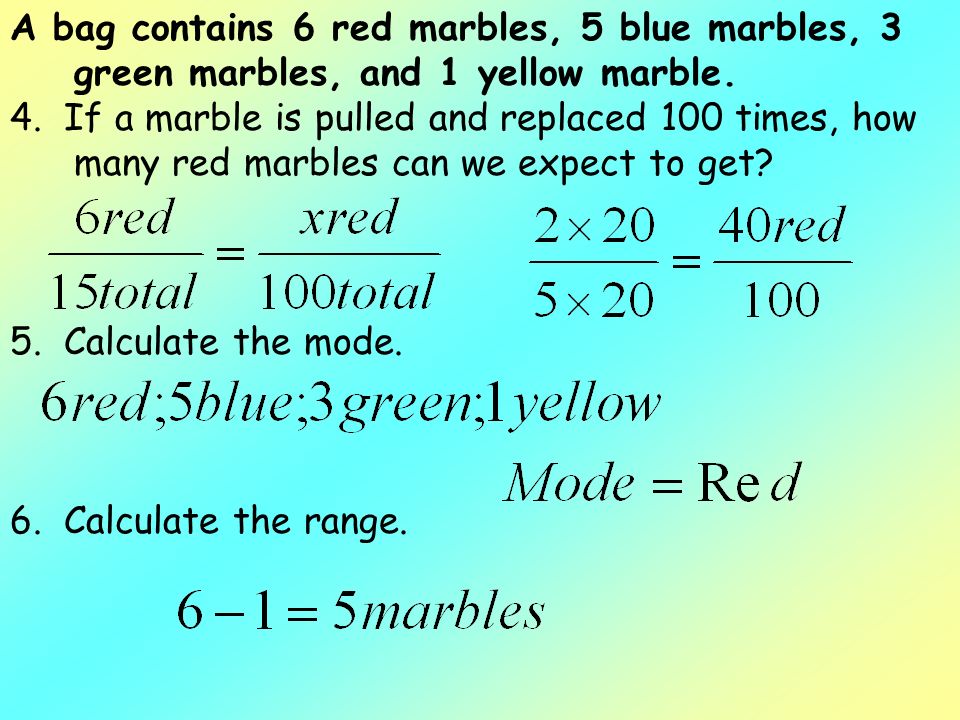A bag contains 9 red marbles 8 white marbles and 6 blue marbles.
A bag contains 8 red marbles 6 blue marbles.
You draw 3 marbles out at random without replacement.
Find p red and blue.
What is the probability of selecting a red marble replacing it in the bag and then selecting a green marble.
So i could pick that red marble or that red marble.
And then there s one blue marble in the bag.
A bag contains 8 red marbles 7 white marbles and 7 blue marbles.
Randomly choose two marbles one at a time and without replacement.
There s one blue marble.
The probability that none of the marbles are red is.
A the probability that the first marble is red and the second is white.
We will assume that only two marbles are drawn from the bag and hence there are two cases.
So this is all the possible outcomes.
C the probability that the second marble is blue.
The first marble is returned in the bag before drawing the second.
A jar contains 4 black marbles and 3 red marbles.
Given that you have bb.
There are 8 6 48 ways of drawing blue then red so p 8 6 18 18 4 3 9 9 4 3 9 4 27 0 148148148 or just under 15.
You have 8 6 4 18 marbles each assumed to have a 1 18 probability of being drawn.
There s two green marbles in the bag.
A draw the tree diagram for the experiment.
A bag contains 8 red marbles 6 blue marbles and 3 green marbles.
B the probability that both are the same color.
These are clearly all yellow.
A bag contains 8 blue marbles 6 red marbles and 4 green marbles.
The first marble is not returned in the bag before drawing the second.
Two marbles are drawn without replacement.
A bag contains 8 red marbles 4 white marbles and 5 blue marbles.
So i could pick that green marble or that green marble.
There s two red marbles in the bag.
If three marbles are drawn out of the bag what is the probability to the nearest 1000th that all three marbles drawn will be blue.
Two marbles are drawn without replacement from a jar containing 4 black and 6 white marbles.

